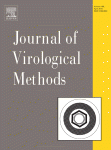Ver ítem
- xmlui.general.dspace_homeCentros e Institutos de InvestigaciónCICVyA. Centro de Investigación en Ciencias Veterinarias y AgronómicasInstituto de BiotecnologíaArtículos científicosxmlui.ArtifactBrowser.ItemViewer.trail
- Inicio
- Centros e Institutos de Investigación
- CICVyA. Centro de Investigación en Ciencias Veterinarias y Agronómicas
- Instituto de Biotecnología
- Artículos científicos
- Ver ítem
Artificial microRNAs as antiviral strategy to FMDV: structural implications of target selection
Resumen
RNA interference (RNAi) appears as a promising strategy to control virus replication. While the antiviral power of short-hairpin RNAs or small-interfering RNAs against FMDV has been demonstrated widely, safer RNAi effectors such as artificial microRNAs (amiRs) have not been evaluated extensively. In this work, transgenic monoclonal cell lines constitutively expressing different amiRs targeting FMDV 3D-coding region or 3′UTR were established. Certain cell
[ver mas...]
RNA interference (RNAi) appears as a promising strategy to control virus replication. While the antiviral power of short-hairpin RNAs or small-interfering RNAs against FMDV has been demonstrated widely, safer RNAi effectors such as artificial microRNAs (amiRs) have not been evaluated extensively. In this work, transgenic monoclonal cell lines constitutively expressing different amiRs targeting FMDV 3D-coding region or 3′UTR were established. Certain cell lines showed an effective, sequence-specific amiR-mediated silencing activity that was accomplished by degradation of the target mRNA, as demonstrated in co-transfection experiments of reporter genes fused to FMDV target sequences. However, FMDV replication in these amiR-expressing cells was affected barely. Experiments aimed at elucidating the cause of RNAi failure demonstrated limited accessibility of the targeted region in the molecular environment of the viral RNA. Since RNAi is mediated by large-dimension silencing complexes containing the siRNA and not simply by a linear oligonucleotide, we propose that target selection should consider not only the local RNA structure but also the global conformation of target RNA.
[Cerrar]

Autor
Fuente
Journal of virological methods 199 : 1-10. (April 2014)
Fecha
2014-04
ISSN
0166-0934
Formato
pdf
Tipo de documento
artículo
Palabras Claves
Derechos de acceso
Restringido
 Excepto donde se diga explicitamente, este item se publica bajo la siguiente descripción: Creative Commons Attribution-NonCommercial-ShareAlike 2.5 Unported (CC BY-NC-SA 2.5)
Excepto donde se diga explicitamente, este item se publica bajo la siguiente descripción: Creative Commons Attribution-NonCommercial-ShareAlike 2.5 Unported (CC BY-NC-SA 2.5)

